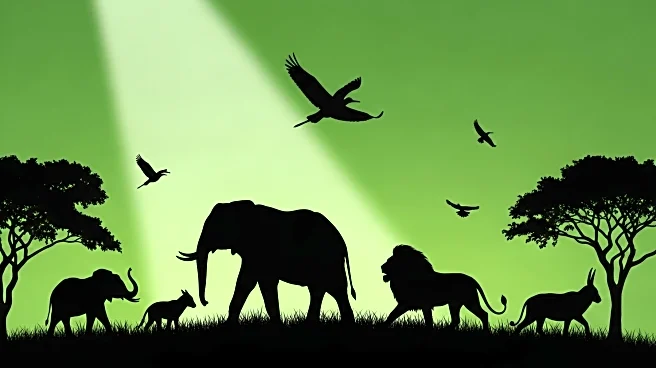What is the story about?
What's Happening?
A recent study has highlighted significant biases in conservation funding, revealing that 83 percent of funding and 84 percent of projects are directed towards vertebrates, particularly mammals and birds. This leaves plants, invertebrates, fungi, and algae with minimal support. The study, led by Benoit Guénard, analyzed 14,600 conservation projects over 25 years, showing that amphibians, despite being the most threatened vertebrate group, received only 2.5 percent of recent funding. The study also found no correlation between the amount of money a species received and its population recovery, indicating that well-funded species are not necessarily the ones recovering. The analysis suggests that approximately $4 billion annually is needed to mitigate extinction risks, far exceeding the current $80 million directed to species-level efforts.
Why It's Important?
The findings underscore a critical imbalance in conservation efforts, where funding is disproportionately allocated to charismatic species, such as elephants and pandas, while many threatened species receive little to no support. This bias could undermine biodiversity conservation, as small-bodied and overlooked species, which provide essential ecosystem functions, remain unmonitored and unsupported. The study calls for a shift in funding strategies to align with scientific assessments of risk rather than public affection, which could lead to more equitable resource distribution and a more honest approach to conservation. This change is crucial for preserving the ecological fabric that sustains life.
What's Next?
To address these biases, governments and international NGOs may need to reconsider their funding strategies, focusing on scientific assessments of risk rather than the appeal of certain species. This could involve reallocating resources to support a broader range of species, including those that are less photogenic but equally important for ecosystem health. Such a shift could enhance the effectiveness of conservation efforts and help mitigate extinction risks more comprehensively.
Beyond the Headlines
The study highlights the psychological factors influencing conservation funding, where large, furry creatures inspire empathy and attract donors. This preference for beauty and size in conservation efforts could lead to a failure in protecting the ecological fabric that sustains life. Addressing this bias requires a cultural shift in how conservation priorities are set, emphasizing the importance of all species, regardless of their appeal.
AI Generated Content
Do you find this article useful?













